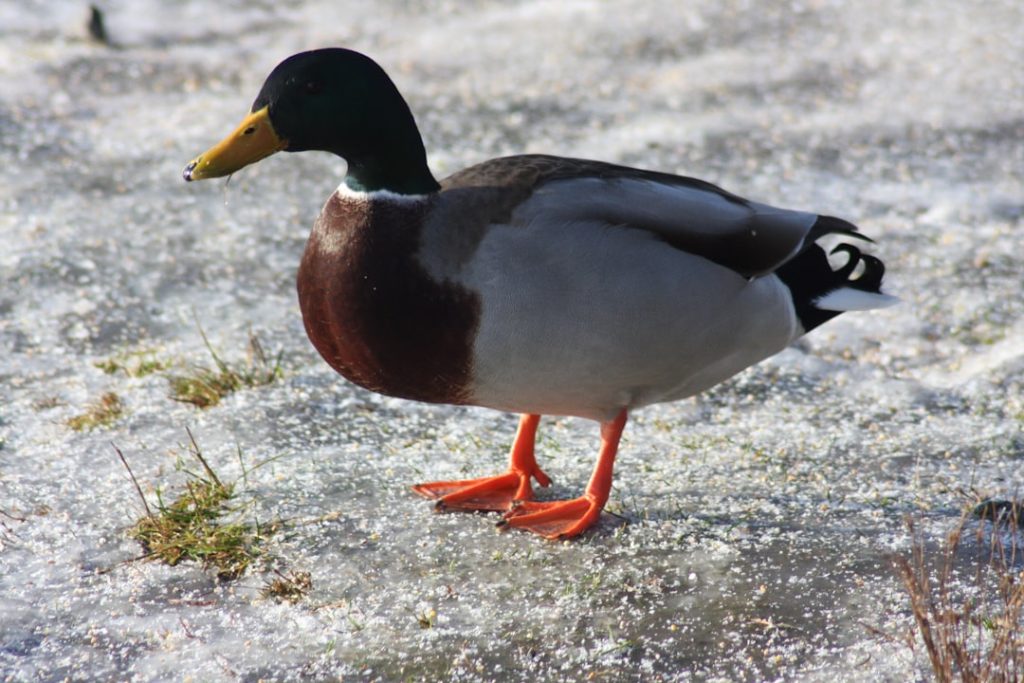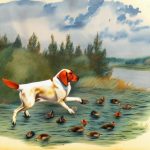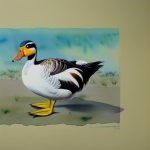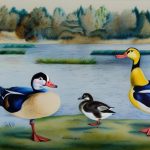Call ducks are a unique and fascinating breed of domestic duck that has been bred for centuries for their distinctive appearance and vocalizations. These ducks are known for their small size, adorable appearance, and high-pitched “call” that gives them their name. Call ducks are popular among breeders and enthusiasts for their charming personalities and suitability for both exhibition and as pets. They are also commonly used as decoy ducks in hunting and as companions for other waterfowl.
Call ducks are often described as the “bantams of the duck world” due to their diminutive size and lively nature. They are known for their friendly and sociable dispositions, making them a popular choice for those looking to keep ducks as pets. Call ducks come in a variety of colors, including white, gray, blue, and pastel shades, adding to their appeal as ornamental birds. Their small size and distinctive appearance make them a favorite among duck enthusiasts and breeders alike.
Table of Contents
Key Takeaways
- Call ducks are a small domesticated breed of duck known for their distinctive vocalizations and compact size.
- Call ducks originated in the Netherlands and were used as decoy ducks for hunting in the 17th century.
- They have a compact, rounded body, a short bill, and a distinctive upright stance, making them easily recognizable.
- There are several different breeds of call ducks, including the White, Gray, and Butterscotch varieties.
- Call ducks require a balanced diet, access to water for swimming, and protection from predators for proper care and maintenance.
History and Origins of Call Ducks
The history of call ducks can be traced back to the Netherlands in the 1600s, where they were originally bred as decoy ducks to lure wild ducks into traps for hunting. Their small size and distinctive calls made them ideal for this purpose, and they were highly prized for their ability to attract other waterfowl. Over time, call ducks gained popularity as ornamental birds and were selectively bred for their unique appearance and vocalizations.
Call ducks were first introduced to England in the mid-1800s, where they quickly gained popularity among breeders and enthusiasts. They were exhibited at poultry shows and became a favorite among fanciers for their charming personalities and striking appearance. Call ducks were officially recognized as a breed by the American Poultry Association in 1874, further solidifying their status as a beloved domestic duck breed.
Physical Characteristics of Call Ducks
Call ducks are known for their small size, with drakes typically weighing around 1-1.2 kg (2-2.5 lbs) and ducks weighing slightly less at 0.9-1.1 kg (2-2.3 lbs). They have a compact and rounded body, short bill, and a distinctive upright stance that gives them a perky and alert appearance. Their legs are set relatively far back on their bodies, giving them a distinctive waddling gait that adds to their charm.
One of the most striking features of call ducks is their wide range of colors and patterns. They come in a variety of shades, including white, gray, blue, pastel, and even pied or spotted patterns. Their plumage is often glossy and vibrant, adding to their visual appeal. Call ducks also have a distinctive call that is high-pitched and carries over long distances, making them excellent decoy ducks for hunting purposes.
Different Breeds of Call Ducks
There are several different breeds of call ducks, each with its own unique characteristics and color variations. The most common breeds include the White Call, Gray Call, Blue Call, Pastel Call, and Pied Call. Each breed has its own distinct coloration and markings, making them popular choices for exhibition and breeding purposes.
The White Call is perhaps the most well-known and widely recognized breed of call duck, with its pure white plumage and bright orange bill standing out against its snowy feathers. The Gray Call is another popular breed, with its soft gray plumage and darker markings adding to its appeal. The Blue Call is known for its striking blue coloration, while the Pastel Call comes in a range of soft and delicate shades. The Pied Call is characterized by its spotted or pied markings, adding a unique twist to the traditional call duck appearance.
Care and Maintenance of Call Ducks
Call ducks are relatively easy to care for and maintain, making them an ideal choice for both novice and experienced duck keepers. They require access to water for swimming and bathing, as well as a secure enclosure or pen to protect them from predators. Call ducks should be provided with a balanced diet that includes commercial duck feed, fresh vegetables, and access to clean water at all times.
It is important to provide call ducks with adequate shelter and protection from the elements, especially during the colder months. They should have access to a dry and warm nesting area where they can lay eggs and raise their young. Regular health checks and vaccinations are also important to ensure the well-being of call ducks, as they can be susceptible to common duck ailments such as respiratory infections and parasites.
Uses and Purposes of Call Ducks
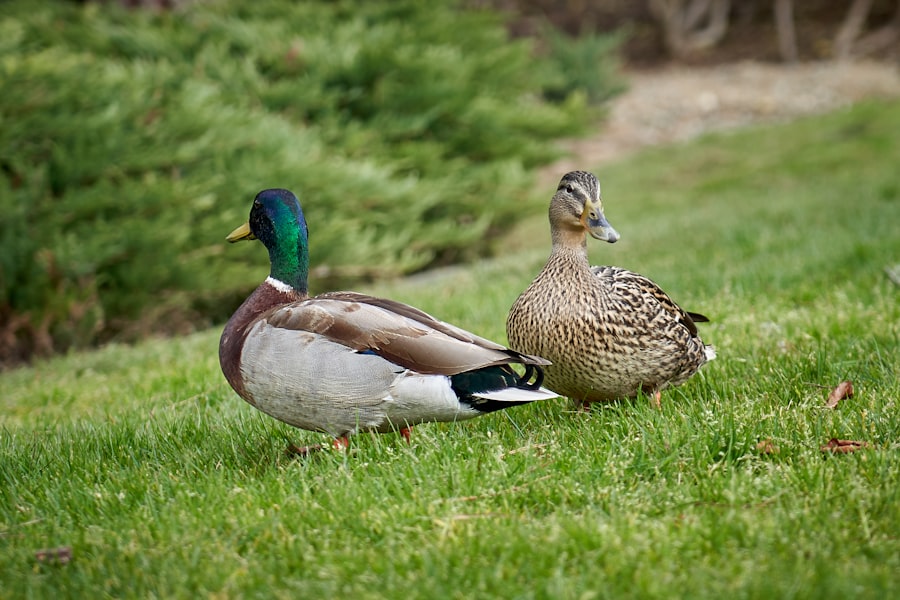
Call ducks have a wide range of uses and purposes, making them a versatile and valuable breed for both hobbyists and professionals. They are commonly used as decoy ducks in hunting, where their distinctive calls and small size make them ideal for attracting wild waterfowl. Call ducks are also popular as exhibition birds, with their charming personalities and striking appearance making them a favorite among poultry fanciers.
In addition to their practical uses, call ducks are also kept as pets due to their friendly nature and sociable dispositions. They are often kept alongside other waterfowl or poultry breeds as companions, adding a touch of charm and character to any flock. Call ducks are also used in breeding programs to create new color variations and patterns, adding to their appeal as ornamental birds.
Conclusion and Future of Call Duck Breeds
Call ducks have a rich history and a bright future ahead, with their unique characteristics and versatile uses ensuring their continued popularity among breeders and enthusiasts. As interest in ornamental waterfowl continues to grow, call ducks are likely to remain a favorite choice for those looking to keep ducks as pets or exhibition birds. Their small size, charming personalities, and striking appearance make them an ideal addition to any flock or collection of waterfowl.
With ongoing efforts to preserve and promote rare duck breeds, call ducks are likely to continue thriving in the future. Breeders are constantly working to develop new color variations and patterns, ensuring that call ducks remain an exciting and diverse breed for years to come. Whether used as decoy ducks in hunting, exhibition birds at poultry shows, or beloved pets in backyard flocks, call ducks are sure to capture the hearts of duck enthusiasts around the world for generations to come.
If you’re interested in learning more about duck breeds, you might also want to check out this informative article on when duck mating season occurs. Understanding the mating season can be crucial for breeders looking to raise healthy and happy ducks.
FAQs
What are Call Ducks?
Call ducks are a small breed of domestic duck that are known for their distinctive “call” or “whistle” which is much louder than other duck breeds. They are often kept as pets or for exhibition purposes.
What are the different breeds of Call Ducks?
There are several recognized breeds of Call Ducks, including the White, Gray, Blue Fawn, Pastel, Butterscotch, and Mallard. Each breed has its own unique coloration and markings.
What is the average size of Call Ducks?
Call Ducks are one of the smallest breeds of domestic ducks, with an average weight of around 1-1.5 pounds and a height of 9-11 inches.
What is the temperament of Call Ducks?
Call Ducks are known for their friendly and sociable nature. They are often described as being curious, active, and intelligent. They can also be quite vocal, especially the females.
What is the purpose of breeding Call Ducks?
Call Ducks are primarily bred for exhibition and ornamental purposes. They are also popular as pets due to their small size and friendly disposition. In some cases, they may also be used for their eggs or meat, although this is less common.
What are the care requirements for Call Ducks?
Call Ducks require a suitable living environment with access to water for swimming, a balanced diet, and protection from predators. They also need regular veterinary care and attention to their overall well-being.
Meet Walter, the feathered-friend fanatic of Florida! Nestled in the sunshine state, Walter struts through life with his feathered companions, clucking his way to happiness. With a coop that’s fancier than a five-star hotel, he’s the Don Juan of the chicken world. When he’s not teaching his hens to do the cha-cha, you’ll find him in a heated debate with his prized rooster, Sir Clucks-a-Lot. Walter’s poultry passion is no yolk; he’s the sunny-side-up guy you never knew you needed in your flock of friends!

